Recent Articles
Popular Makes
Body Types
Mazda: What Makes Them Different
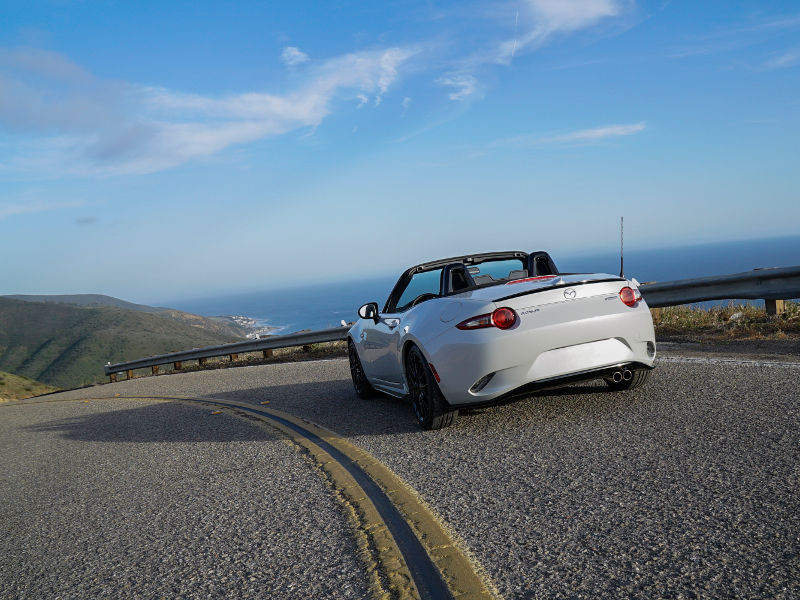
Mazda MX-5 Miata - Rear Drivers Side Corner View - White ・ Photo by Mazda USA
Mazda is a relatively small company, usually ranking around 15th in the world by sales, yet their cars are almost always affordable, reliable, well-engineered, efficient, and fun to drive.
Their first vehicle was the Mazda-Go, the first autorickshaw, a 3-wheeled cross between a truck and a motorcycle that was first introduced in 1931. Their first four-wheeled vehicles were trucks, starting in the 1950s, and they introduced their first real car, the 2-door micro-mini R360 Coupe in 1960. In 1962, the Carol 360 was announced, a 4-door micro-mini with room for four adults. With these vehicles, the manufacturer captured a large part of the lightweight car market in Japan. Over the years the Mazda lineup expanded, adding larger and more powerful vehicles.
Mazda started selling vehicles in the United States in 1970, beginning with the RX-2, and the rest is history. Let’s take a look at what sets Mazda apart from most of the other automakers.
Cars
Both the Mazda3 and the Mazda6 share the same philosophy: lightweight, efficient engines, and excellent handling. They also both use the KODO “Soul of Motion” design language, which helps make the cars both good looking and aerodynamic.
The compact Mazda3 has a curb weight of around 2,900 lbs, and uses either a 2.0 liter SKYACTIV 4-cylinder that puts out 155 horsepower and 150 lb-ft of torque, or a larger 2.5-liter unit that generates 184 horsepower and 185 lb-ft of torque. Both engines use a 13.0:1 compression ratio, feature advanced direct injection and variable intake valve timing, and run on regular unleaded. A unique feature is the i-ELOOP system, which uses energy recovered when braking to charge a capacitor, which is eventually used to power the car’s electronics, improving fuel economy by 1 mile per gallon both in the city and on the highway.
The larger Mazda6 is also a lightweight, coming in at around 3,200 lbs, and power comes from the same 2.5 liter 4-cylinder as the Mazda3. The i-ELOOP system is available, and improves fuel economy by 2 mpg in this application. Like the Mazda3, the Mazda6 handles better than many of its competitors, thanks to its light weight and suspension tuning.
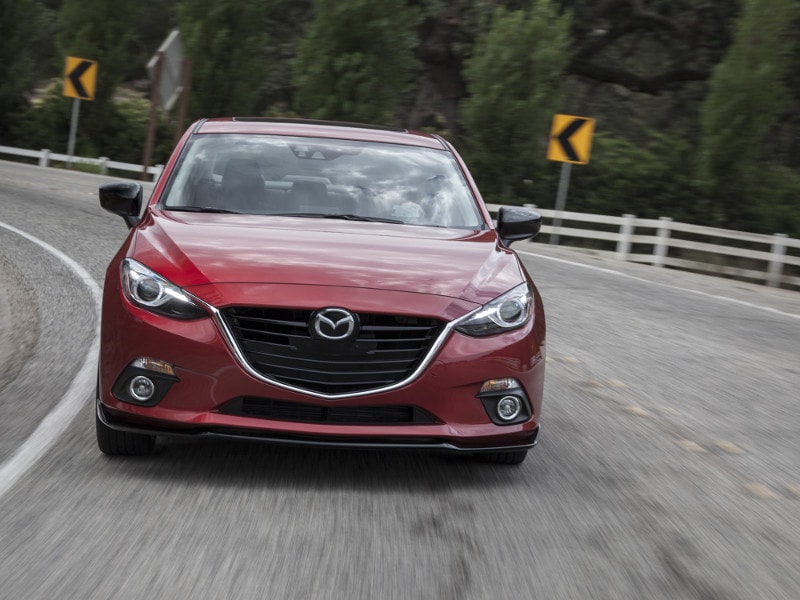
Photo by Mazda USA
SUVs
Mazda’s CX-3, CX-5, and CX-9 SUVs feature a familiar story, as they are among the minority of sport utility vehicles out there that can live up to the ‘sport’ part of the name. Again, the KODO design language means that they feature attractive swooping designs that also cut cleanly through the air.
The CX-3 is Mazda’s smallest SUV, and is powered by a 146 horsepower 2.0 liter 4-cylinder engine that sends power to the wheels through a six-speed automatic transmission. Front-wheel drive is standard, while all-wheel drive is available, but adds nearly 150 lbs to the front-wheel drive’s 2,800 lb curb weight. As always for Mazda, the CX-3 is fun to drive, even though it might not be the fastest in its class. Fuel economy for FWD models is 29 miles per gallon in the city and 35 mpg on the highway, while AWD models are rated 27 mpg in the city and 32 on the highway.
The CX-5 is a step up in size, though the family resemblance with the CX-3 is obvious. Engine choices include a 155 horsepower 2.0 liter 4-cylinder (only available in front-wheel drive, and only with a 6-speed manual transmission!) and a larger 184 horsepower 2.5-liter unit (available in front- or all-wheel drive, but only with an automatic). Curb weight with the 2.0-liter manual transmission combo is only 3212 lbs, but that climbs to 3589 lbs when equipped with the 2.5-liter engine, automatic transmission, and all-wheel drive. The manual transmission version is the best handling of the bunch, but the 2.5-liter engine is a little more satisfying, and fuel economy doesn’t suffer all that much with the larger engine.
The Mazda CX-9 is the largest of the lot, and it's is a full-size crossover. It hasn’t had the full KODO treatment, and so isn’t quite as stylish as its siblings. Power comes from a 3.7 liter DOHC V6 that puts out 273 horsepower, which is sent to the front wheels, or optionally to all four wheels via the Active Torque Split All-Wheel Drive system. Unlike the others, the CX-9 is a heavyweight, coming in at over 4,500 lbs in AWD form. Despite that weight, fuel economy is acceptable, though nothing to write home about; the handling, however, is worth noting, as the CX-9 belies its size and weight through the corners.
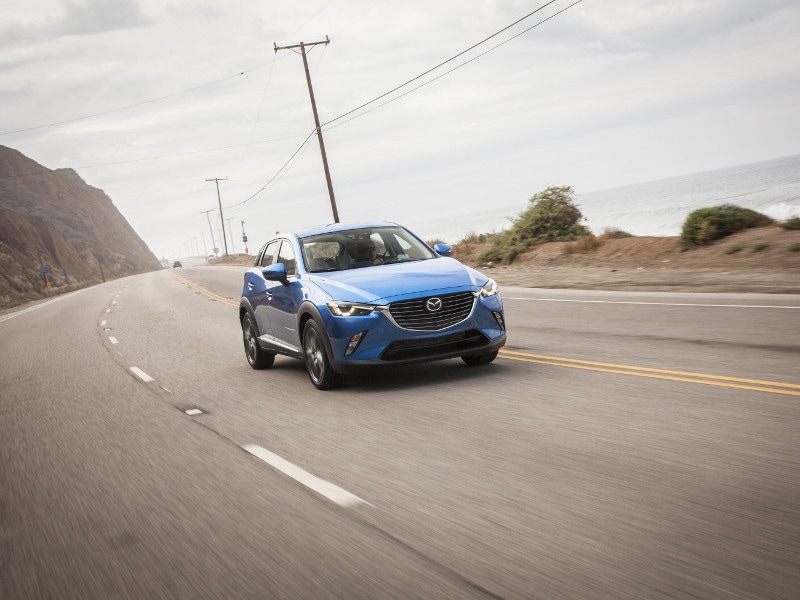
Photo by Mazda USA
Sports Cars
An updated version of the classic British sports car, the Miata basically re-invented the genre when it was first introduced in 1989, and it still doesn’t really have a direct competitor. While new models are heavier than the first generation, they still only weigh around 2350 lbs, and make good use of the 2.0-liter SKYACTIV-G 4-cylinder engine’s 155 horsepower. Thanks to its light weight, fuel economy with the manual transmission is rated at 27 miles per gallon city and 34 mpg on the highway.
Mazda is keen to point out that on any given weekend, there are more Mazdas on the road-race tracks of America than any other brand. While they aren’t all MX-5 Miatas, the small roadster has earned itself a reputation as a great handling sports car. While power might seem to be in short supply in a Miata, that is part of what makes the car so fun. The MX-5 is a momentum car, where the goal is to try and maintain as much precious speed as possible through the corners, and the limited power means you spend a lot of time at full throttle, wringing as much as possible out of the engine.
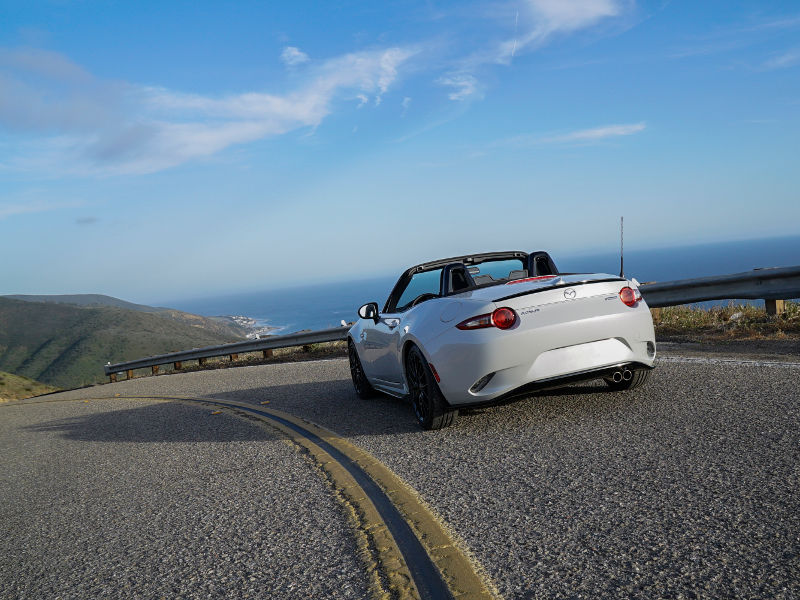
Photo by Mazda USA
Rotary Engines
While Mazda wasn’t the only manufacturer to dabble with Wankel engines (NSU developed the first rotary-powered car in 1964, while Citroen and GM also tested the engines in their cars), they are the only manufacturer that has actively kept working on them. Unfortunately, Mazda has no Wankel-powered vehicles in production at the moment, but the company has continued work on the Wankel engine, and recently showed the RX-VISION concept with a SKYACTIV-R rotary engine at the Tokyo Motor Show.
Mazda’s first rotary-engined vehicle was the 1967 Cosmo, and rotary engines have been used in models including the 1967-1972 Cosmo, 1971-1978 RX-3, 1975-1981 RX-5, 1978-2002 RX-7, and 2003-2012 RX-8. There was even a short-lived Wankel-powered pickup, the Mazda Rotary Pickup. The apex of the Mazda rotary program (so far at least) might have been the 1991 24 Hours of Le Mans, when a rotary-powered Mazda 787B prototype took first place overall, the first and so far only win for both a Japanese manufacturer and a non-reciprocating engine.
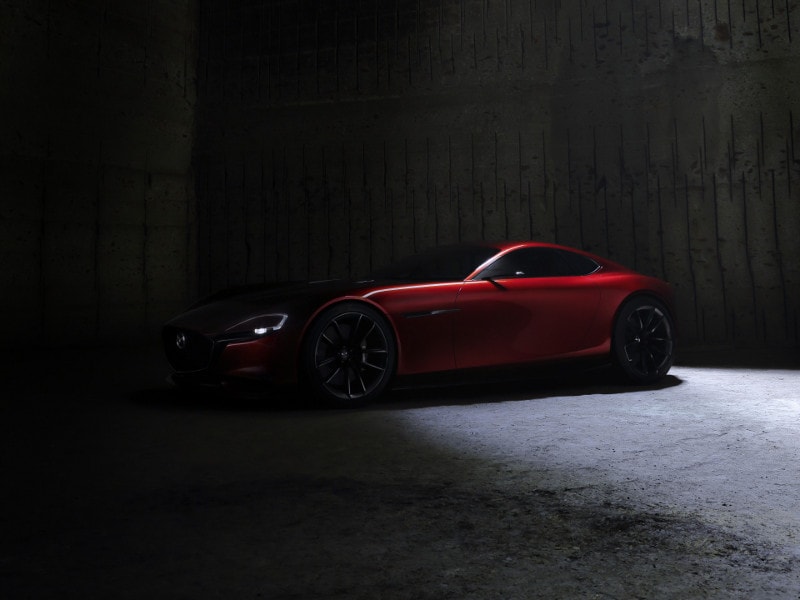
Photo by Mazda USA